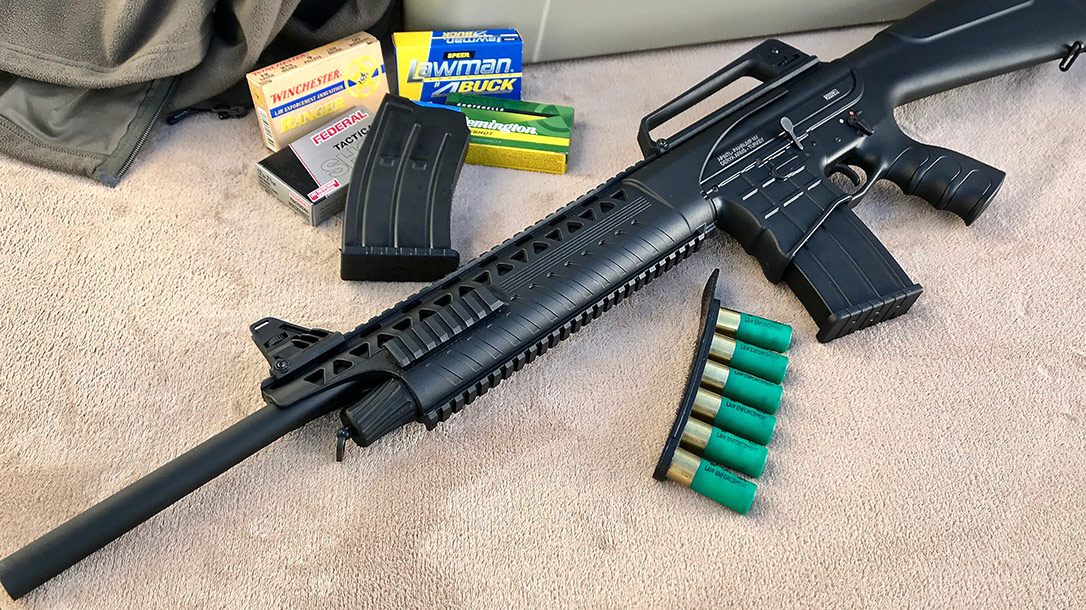To say that the AR platform is the most popular semi-automatic rifle in America is a no-brainer. So many people, like me, cut our teeth on it in military training or law enforcement. The number of upright citizens out there who prefer the MSR (modern sporting rifle) for field use, defense and competition is a high number, indeed. That’s what makes shotguns, like the Rock Island Armory VR60 Plus 1 so popular.
The Rock Island Armory VR60
Consequently, it’s not a big leap to presume that other types of firearms based on this platform should be popular. With many of the same controls, method of function and loading, familiarity of operation in a gun is a plus.
With this premise, Rock Island Armory (RIA) has produced a new semi-automatic 12-gauge shotgun. It not only resembles the AR outwardly, but has controls—safety, bolt catch and magazine release—in the same place. Plus sights that closely resemble those on the M16A2.
Advertisement — Continue Reading Below
Gun Details
Designated the VR60 Plus 1, this shotgun has a gas-operated action, like the AR it mimics. The difference is it’s located around the support tube running below the barrel with the ventilated polymer forend shielding it. This forend forms a cover that curves up to the top of the receiver, giving the VR60 a full-length accessory rail. It also has a bottom rail and two short rails towards the front, on either side. There’s plenty of room for optics, laser sights or tactical lights.
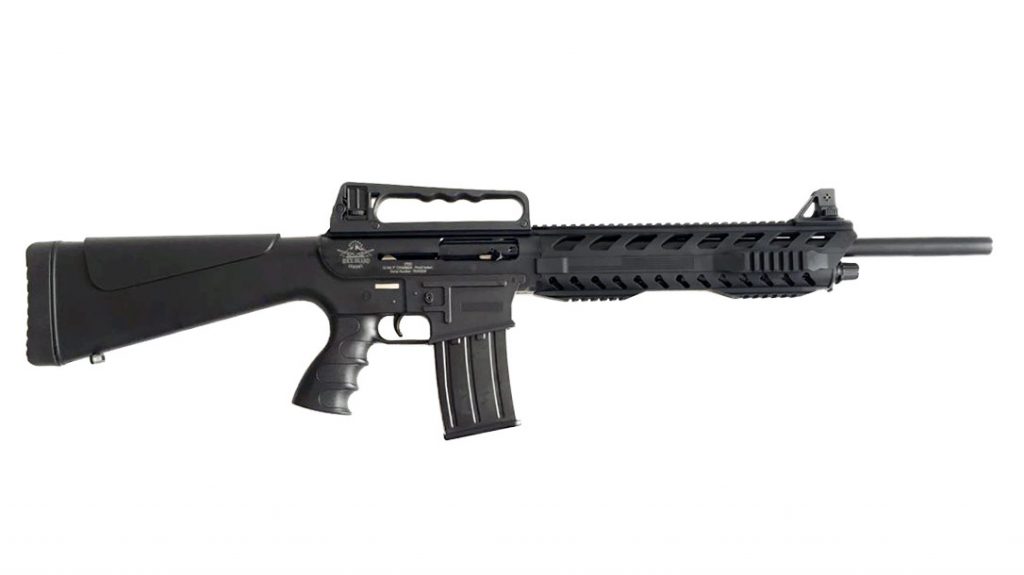
The handguard/rear-sight assembly is removable, along with the front sight. The buttstock, with recoil pad, finger-groove pistol grip and magazine well, are also one big polymer assembly that attaches to the lower portion of the aluminum alloy receiver.
Advertisement — Continue Reading Below
The most noticeable departure from the AR-system is the charging handle of the VR60. It is a ventilated knob that attaches directly to the BufferBolt System. The BufferBolt System is exposed in the oversized ejection port on the right side of the receiver. The detachable steel box magazine is “AR-ish” and holds five 12-gauge shotshells. These can be either standard 2¾-inch length or 3-inch magnums.
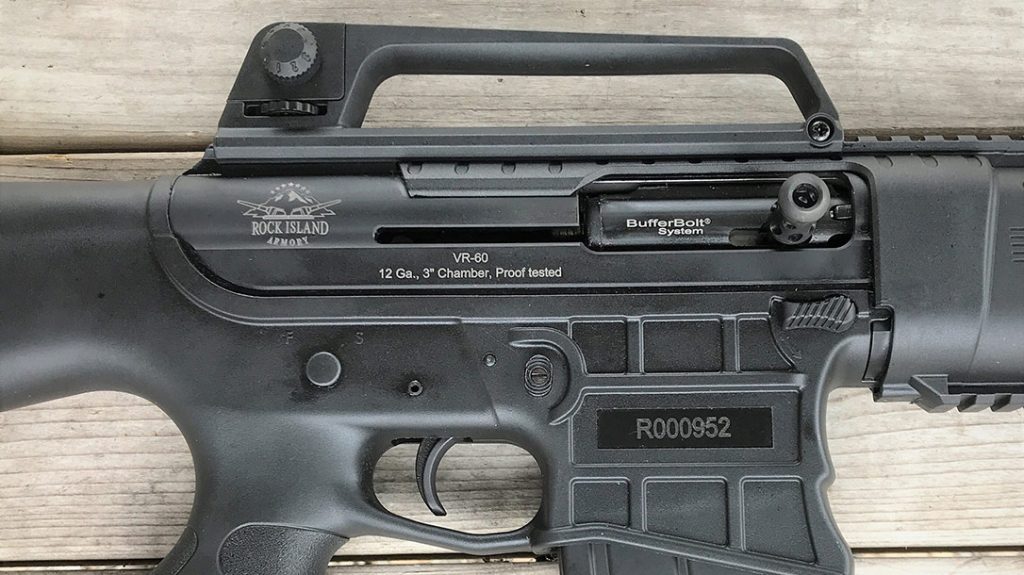
The VR60 Plus 1 is your prototypical “black gun,” and the polymer furniture is flat black with metal parts that have a black chrome or anodized black finish. A cap on the support tube in the forend has a sling swivel, as does the buttstock. The 20-inch contoured barrel has replaceable choke tubes and comes with cylinder, modified and full chokes in a plastic case with a choke wrench.
Advertisement — Continue Reading Below
Accessorizing
Another feature is interchangeable gas pistons for light or heavy loads. Accessories include a shorter recoil pad to decrease the length of stock pull, an orange plastic empty chamber indicator, muzzle plug, safety padlock and owner’s manual.
This Turkish-made shotgun has a limited life-time warranty. Trigger pull is typical shotgun, with a tiny amount of take-up and some gritty creep, before the trigger breaks at about 6.5 pounds. Overall fit and finish, to me, is appropriate to this utilitarian firearm and the price-point specified by Rock Island Armory.
I tried fitting some “red-dot” sights on the top rail of the VR60. But I didn’t have any on hand that would co-witness with the factory sights. So, I elected to do my test shooting with the factory sights only.
Advertisement — Continue Reading Below
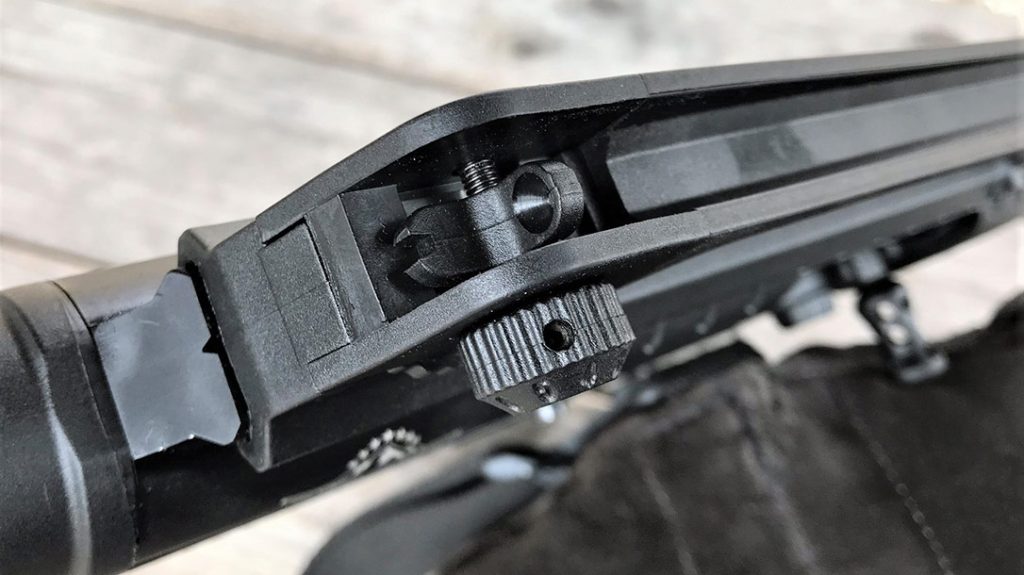
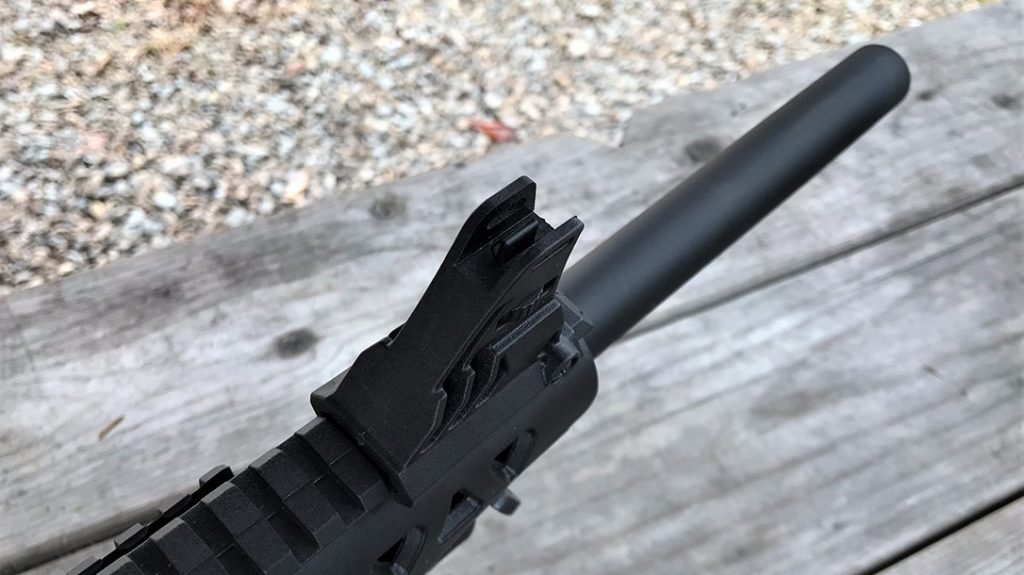
Selecting Ammunition
Next item on the agenda was to select shotgun fodder. I decided not to use any 3-inch shells as this is more of a hunting-type load in my opinion. Also, the main-stream home defender or LEO will in practically all cases be using 2¾-inch shells.
Advertisement — Continue Reading Below
To break the VR60 in, I brought along four boxes of Fiocchi High Velocity (high brass) shells with 1.25 ounces of number 7.5 shot. For closer range “social” situations, I selected Speer Lawman #4 buckshot, which has 27 pellets per shell. Next is Winchester Ranger Low Recoil (low brass) 00 buck that carries nine pellets. Followed by Remington Express high brass 00 buck with nine pellets.
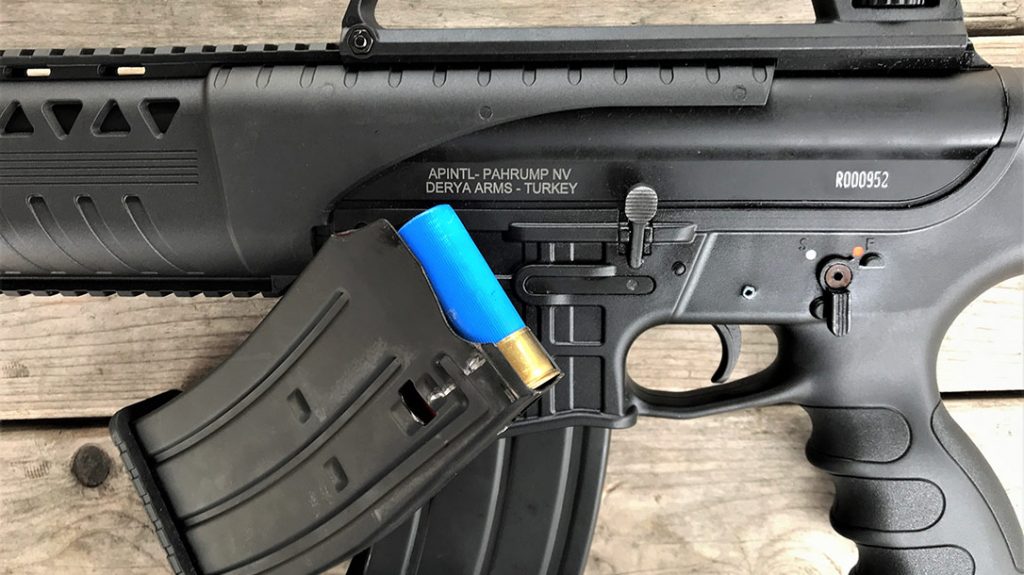
To round out my buckshot, I chose Federal Tactical high-brass loads that have eight of the larger 000 buckshot pellets. For single-projectile shells using the 1 oz. Foster-type “rifled slug,” I elected to use Federal Tactical, Remington Slugger, Speer Lawman and Winchester Ranger.
Advertisement — Continue Reading Below
Let’s Scatter!
The scattergun had shipped with the modified choke installed, which I replaced with the cylinder bore choke. The next order of business on range day was to do some “function shooting” with the VR60 Plus 1. I followed the instructions provided by the importer to ensure the shotgun would function reliably once the actual T&E began. I accomplished this by using the Fiocchi 7.5 hunting shells and I plinked at steel targets. All while loading magazines and firing as fast as possible.
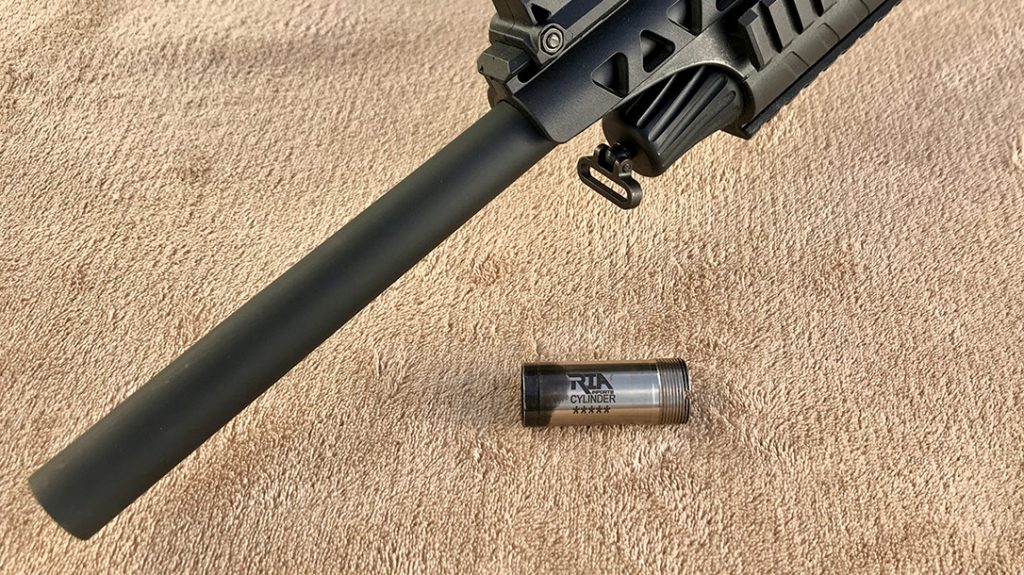
Some notes here. There were two feeding malfunctions with these shells, which was more or less anticipated. It was also discovered that empty magazines do not drop out when the magazine catch button is pressed. You have to manually pull them out, which is not so difficult after doing it several times. Loading the magazine is a challenge, as the brass rims on the shells catch on the forward edge of the brass on the shells you have already loaded. I found if you pressed down on the shell in the magazine, then tapped it back, it would go in under the feed lips of the magazine easier.
Advertisement — Continue Reading Below
I patterned one shell just out of curiosity and at 15 yards had a spread of 18.21 inches, with up to a 26-inch spread being normal with the cylinder choke. In contrast, a full choke should give a 26-inch spread at 30 yards. In order to more easily see the patterns, we used B-27 silhouette target centers from Birchwood Casey’s Shoot-N-C line, which leaves a nice yellow “halo” around each pellet strike.
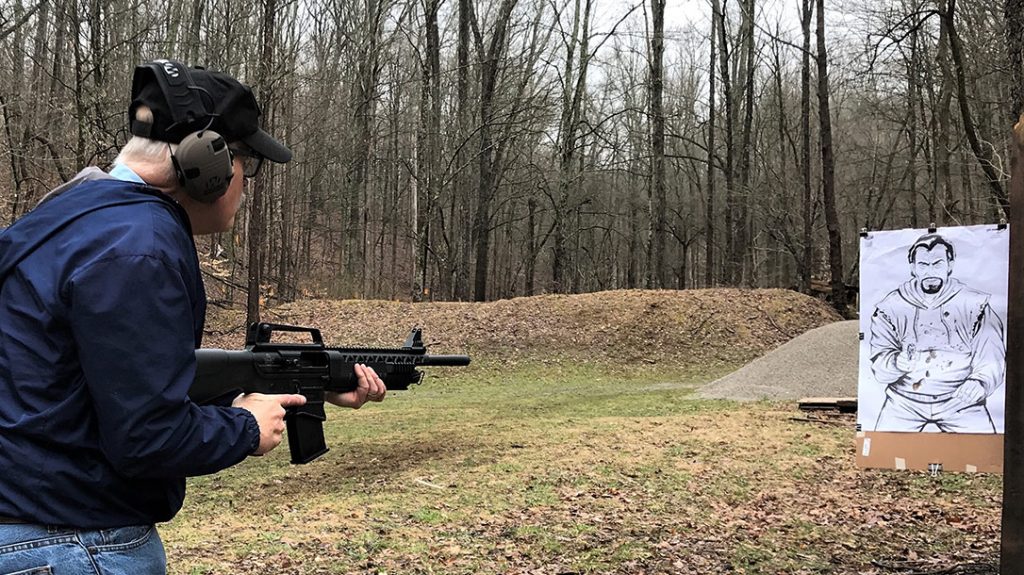
Various Rifled Slug Shells
Now that our autoloading test shotgun was more broken in, it was time to use the various rifled slug shells. I shot three three-shot groups at 25 yards for a group average, shown in the performance table below. Even though the Buffer Bolt System and gas operation helped tame the recoil somewhat, those big 1-ounce Foster-type rifled slugs get your attention when you pull the trigger.
Advertisement — Continue Reading Below
Fortunately, I found a Recoil Protection pad that fits on the upper torso kind of like a shoulder holster. I don’t think I would have made it through this T&E without it!
Firing from the bench using a sandbag rest I found right off that the rear sight needed to be moved way over to the right. It was also shooting a bit low. My best three-shot group was with the Remington Slugger shells and measured 1.34 inches. Its group average was 1.77 inches, and the best overall group average went to the Speer Lawman slug loads.
From the Bench
I again used the bench and bag to get patterns with the buckshot shells. Initially, I put two of the B-27 center targets side-by-side, not knowing what the spread might be at 15 yards. I soon discovered 12-inch wide, by 18-inch-long centers were big enough for the buckshot patterns at the distance I used. Buckshot, especially the high brass “Express” loads, gives the shoulder a good wallop, too.
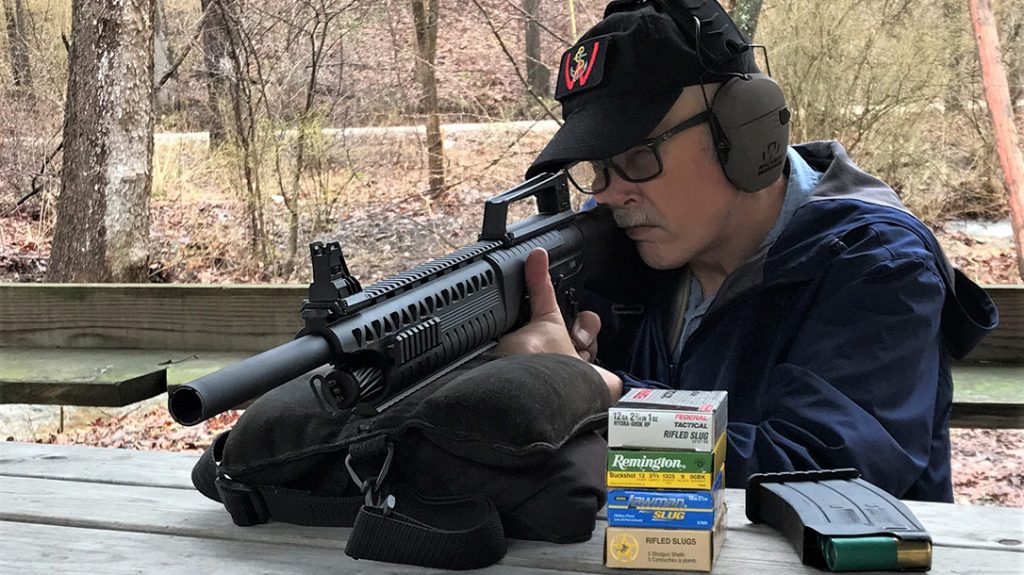
The Winchester Ranger LE shells are reduced recoil and low brass, so were the least punishing to shoot. They also had the tightest spread, which measured 8.56 inches in diameter for three shots. The other spread diameters are also in the aforementioned table.
I did use the sights and found the shot columns were also a bit low and left of point of aim (POA). Shot wads often hit the targets with both slug and buck loads. The #4 buck in the Speer Lawman shell had the biggest spread at 14.28 inches, but still put a lot of pellets on the target. The shooting distances selected for this T&E reflect home-defense and urban environment scenarios.
Practical Shooting
Having had no malfunctions with the slugs or buckshot shells, I erected a human-like silhouette target at 25 yards for a practical shooting exercise. With a 5+1 capacity, I loaded the VR60 with a slug shell in the chamber and 5 in the box magazine. The shells were a mix of the four brands I had on hand. I loaded my spare magazine with a mix of five 00 buckshot.
Starting from a barricade position at a high-ready, I raised the shotgun, wiped off the safety and engaged the silhouette from the left side of the barricade with two shots, then the right side with two shots, and then two shots kneeling from the right side. I then extracted the empty magazine from behind cover, reloaded, did a threat assessment and took a quick break to reload my magazine (2 #4 buck, 3 00 buck), and advanced to the 15-yard line.
Here, with the shotgun again at high-ready and on safe, I took off the safety, and fired five shots as fast as I could using the sights. I knelt, assessing the situation as I reloaded made the gun safe, and then advanced to 7 yards. With the butt of the Rock Island Armory VR60 tucked into my side, just below my armpit, and the muzzle pointing at the target, I engaged sans sights with the last five shells.
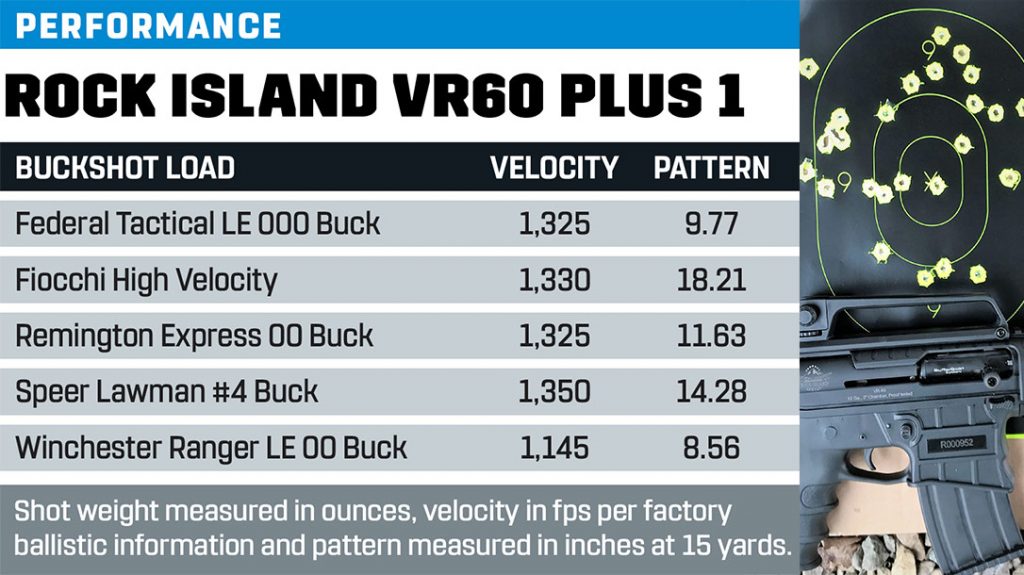
The Aftermath
About 93 percent of the buckshot and all of the slugs were in the “boiler room.” Most of the larger spread was with the #4 buck, and there were a number of hits in the right arm/hand, collar-bone area and one hit in the left arm. Only one pellet strayed off the “bad guy” missing his right elbow by about 1 inch. He was also peppered with plastic wads and the plastic shot buffer that is inside the buckshot shells.
No malfunctions occurred during this exercise, and I was impressed at how quickly I could trigger controlled, repeat shots with the Rock Island Armory VR60 Plus 1. I failed to mention that on the rear sight, there is a flip-up open notch. This is the sight I used for my final test stage. It shot to the same POA as the aperture sight.
I believe for the home defender or LEO who also uses an AR for defense of duty, the Rock Island Armory VR60 Plus 1 would be a logical choice for a shotgun given its commonality with the rifle.
For more information visit Armscore.com.
Rock Island Armory VR60 Plus 1 Specs
Gauge: 12
Barrel: 20 inches
OA Length: 39.0 inches
Weight: 8.04 pounds (empty)
Stock: Two-piece polymer
Sights: Adj peep rear, elevation front post
Action: Semi-auto
Finish: Black chrome, matte
Capacity: 5+1
MSRP: $529
This article was originally published in the Tactical Life Gun Annual June/July 2021 issue. Subscription is available in print and digital editions at OutdoorGroupStore.com. Or call 1-800-284-5668, or email subscriptions@athlonmediagroup.com.
